Native plants are an essential and integral part of our natural state forests in Delaware. They play a critical role in purifying the air, maintaining water quality, improving wildlife habitats, and serving as a “filter” for harmful and toxic chemicals in some of our soils.
Additionally, native plants minimize stormwater runoff into waterways, further protecting water quality.
Here is a list of 11 native plants in Delaware.
1. The Dwarf Fringe Tree (Chionanthus virginicus)
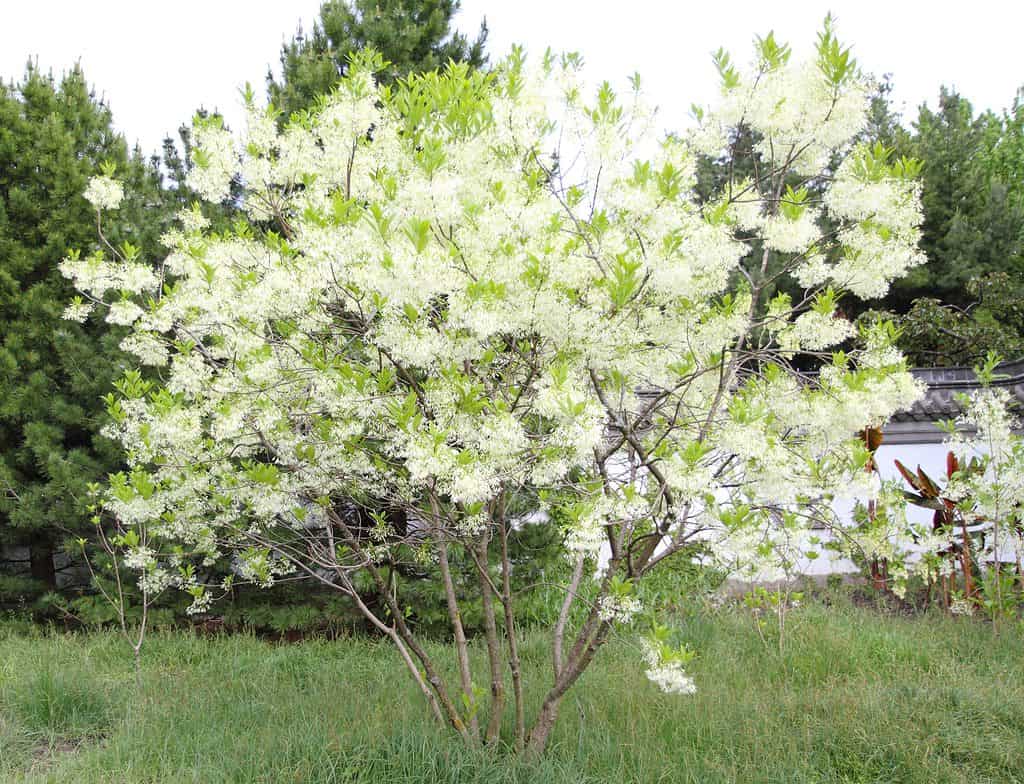
The white fringe tree is ideal for planting along roadsides or near homes because it does not produce messy fruits like other fringe trees.
This is a small, deciduous tree native to Delaware. It can reach heights of up to 20 feet and spread from 15 to 20 feet wide. Its leaves are simple, alternate, and elliptical with entire margins. They are two to four inches long, dark green on top, and have a paler underside.
Small white flowers bloom in May or June, followed by fruits that ripen in September or October and transform from greenish-yellow to orange-red. This plant is ideal for planting along roadsides or near homes because it does not produce messy fruits like other fringe trees.
It grows well in either sunny areas or partial shade, preferring moist soil, but can endure drought once well-established. It will grow best in USDA hardiness zones 5b-9a but can be grown as far north as zone 6b with care taken to protect it from winter. This is done by covering it with soil or mulch when temperatures fall below 25 degrees Fahrenheit.
2. Smooth Sumac (Rhus glabra)
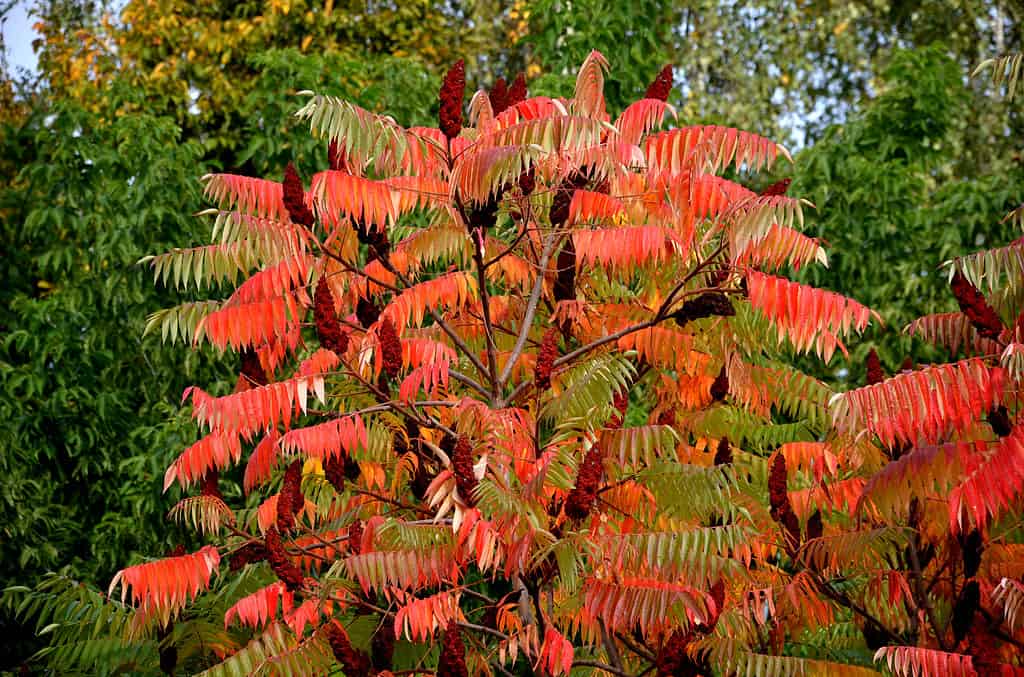
Smooth sumac is a native of the eastern U.S., where it grows in sandy soil along roadsides and open woodlands.
©Beekeepx/Shutterstock.com
The smooth sumac is a deciduous shrub that reaches heights and widths of around 10 feet. It blooms in clusters with tiny white flowers in the spring, followed by bird-attractive small red fruits.
Smooth sumac is a native of the eastern U.S., where it grows in sandy soil along roadsides and open woodlands. This plant produces a beautiful display of red foliage from September through November.
It is commonly planted as an ornamental tree along streets and highways for its colorful fall foliage display, but it can also be grown as a shade tree for larger properties.
The optimal conditions for smooth sumac’s growth are evenly moist soils and good drainage. It requires little maintenance once established but can be pruned to keep it under control or reshaped if necessary.
3. Eastern Redcedar (Juniperus virginiana)
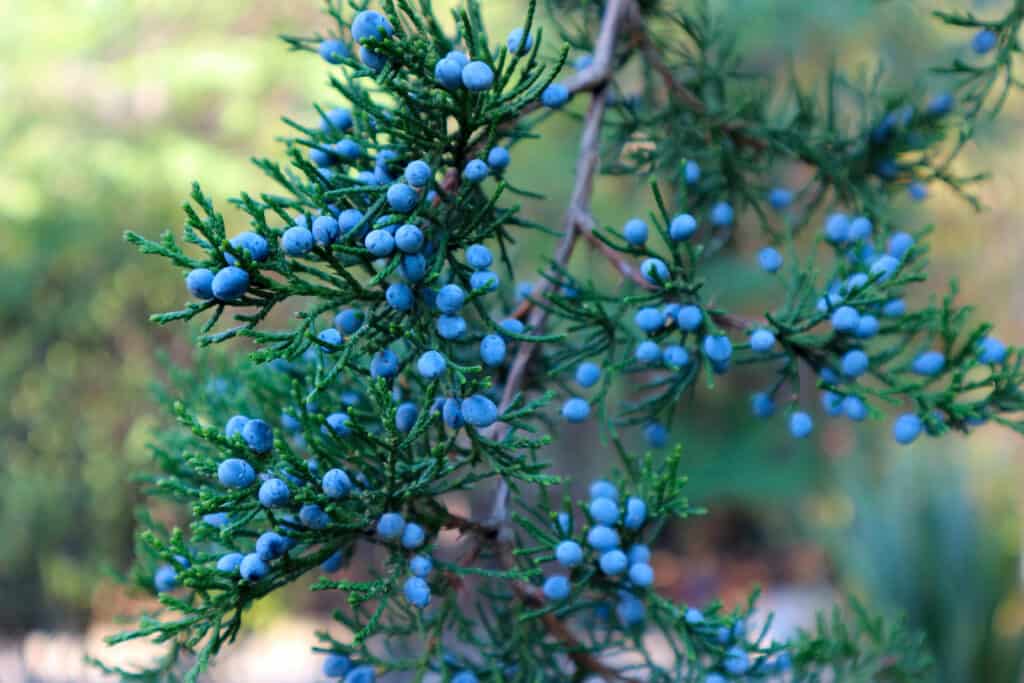
The eastern red cedar prefers sun exposure to light shade and well-drained soil that is not too dry nor too wet.
©iStock.com/Lyudmila Chetvertnykh
The eastern red cedar is commonly used as a hedge or windbreak. When young, the tree has a pyramidal shape but becomes more irregular as it ages. Its needles are about one inch long, dark green on top, and lighter underneath. They are arranged in whorls of three. The bark is reddish-brown to grey and becomes scaly with age. The trunk is straight, cylindrical, and often twisted. The eastern red cedar grows 60 to 80 feet high and spreads about 30 feet. Its wood is fragrant and aromatic when cut or burned.
The eastern red cedar prefers sun exposure to light shade and well-drained soil that is not too dry nor too wet. It will grow in many soil types, including sandy or clay soils with pH levels above six.
It prefers moist areas but will tolerate dry soils better than most other evergreens. This plant can tolerate salt spray, but best grows inland rather than near the coast, where salt spray damage may occur during storms. Eastern red cedar should be planted in groups for best results since it is slow growing at first before becoming a mature specimen tree.
4. Dock Mallow (Malva sylvestris)
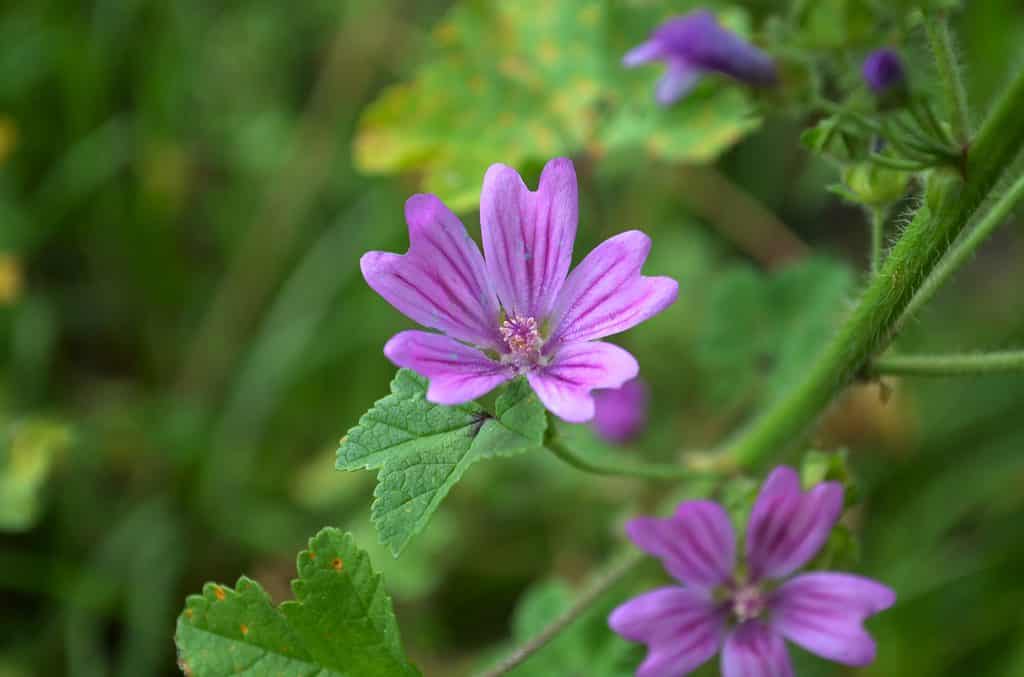
Dock mallow grows from a taproot up to 12 inches long but also spreads by sending out underground runners.
©Lartos_82/Shutterstock.com
Dock mallow is a low-growing, spreading plant with large clusters of pink or white flowers. Long, triangular seed pods follow the flowers. It flourishes in various habitats, including wet woods and meadows.
Its leaves are alternate and compound with three to five narrow lobes. Plants that live in full sun have more deeply divided leaves than those that grow in the shade. In addition, the lower leaves are often more deeply divided than the upper ones.
Dock mallow grows from a taproot up to 12 inches long but also spreads by sending out underground runners. Each new plant has its root system connected to the parent plant by an underground stem called a stolon.
Dock mallow is easy to grow from seed but difficult to transplant because its roots are shallow and easily disturbed. However, the seeds can be collected from plants before they flower and sown directly into the garden in late summer or fall after the first frost.
Seeds may also be collected from ripe fruits, which should be placed in a plastic bag or envelope and stored in a refrigerator until spring, when they germinate naturally as temperatures warm up.
5. Swamp Azalea (Rhododendron viscosum)
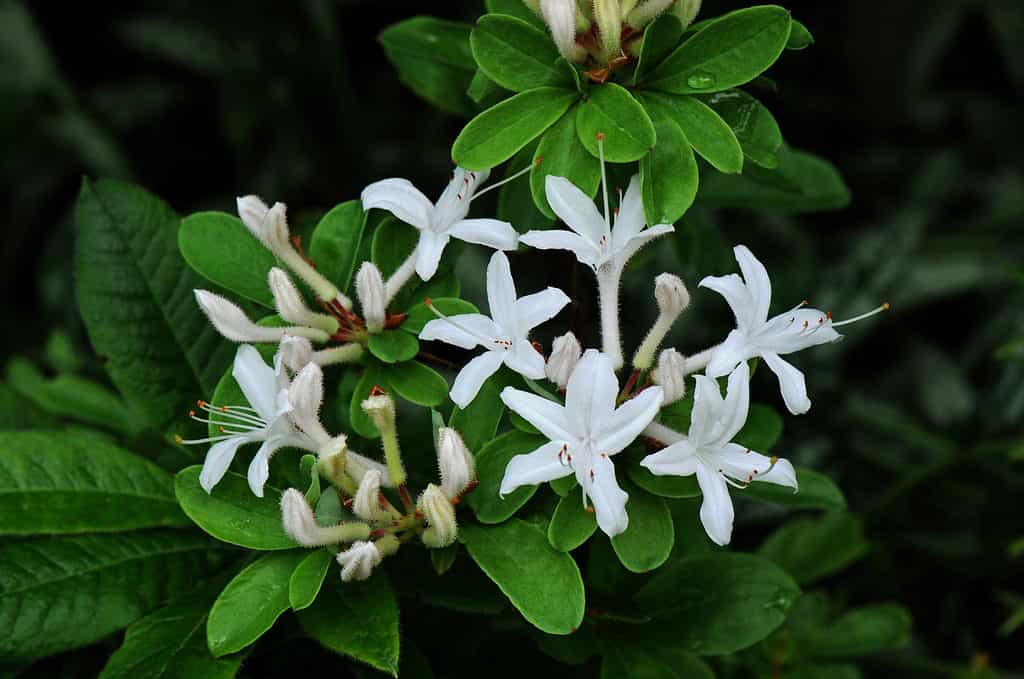
Swamp azaleas can be propagated by seed or cuttings taken in fall or early spring before new growth begins.
©Todd Boland/Shutterstock.com
The swamp azalea is a deciduous shrub that grows in wet soils but can also tolerate dry conditions. It has fragrant pink flowers in spring and summer. The flowers are about two inches across and have five petals each. The leaves are glossy green and elliptical.
Swamp azaleas grow from three to eight feet tall and spread between six and 10 feet wide if not pruned. They do well in partial shade or full sun and moist, acidic soil with good drainage. Swamps are ideal locations for these plants because the soil is often saturated with water throughout the year.
Swamp azaleas can be propagated by seed or cuttings taken in fall or early spring before new growth begins. The seeds should be planted immediately so they will only rot after germinating. Cuttings should be taken from healthy plants and immediately planted into pots filled with soil that drains well but holds water.
6. Broadleaf Arrowhead (Sagittaria latifolia)

©passion4nature/Shutterstock.com
Native to the tropics, this aquatic plant has become invasive in much of the U.S., especially the South. It is a noxious weed that can spread quickly through waterways, choking out native plants and fish habitats. In addition, the plant is difficult to control once it takes hold because it propagates by both seeds and root fragments.
Sagittaria latifolia is a tropical perennial that grows up to 10 feet tall in shallow water or mud, with its leaves floating on or beneath the surface. The heart-shaped leaves are long, narrow, and pointed at the tip. Flowering occurs from June through September with white flowers with six petals each.
The broadleaf arrowhead’s seeds are produced in fruits enclosed by a fleshy covering that eventually falls off when ripe, releasing seeds that can float freely for long distances before germinating. Roots can also break off below ground and form new plants elsewhere via tubers or rhizomes.
7. New Jersey Tea (Ceanothus americanus)
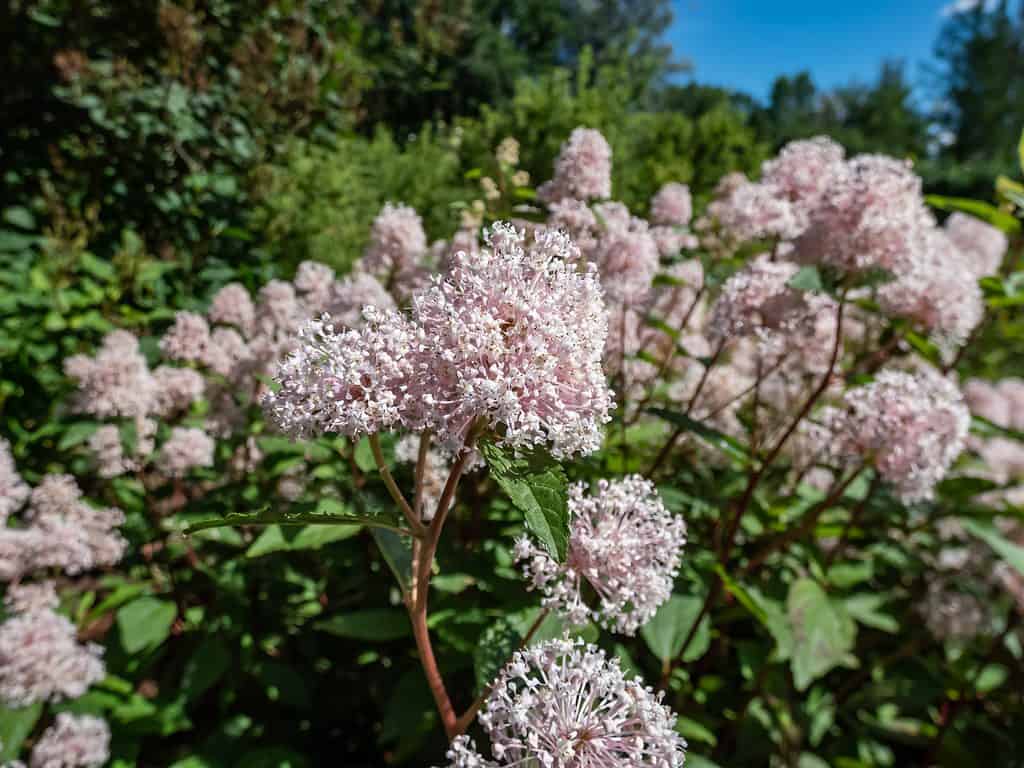
The New Jersey tea’s flowers attract bees and other insects that pollinate them to produce seeds that will grow into new plants.
©Kristine Rad/Shutterstock.com
This plant grows in the understory of forests. It is native to the United States’ northeastern region and southeastern Canada. It has been found in Delaware and Maryland. The plant can grow up to three feet tall and has small, dark green leaves that are velvety to the touch, giving it another common name, velvet-leaved ceanothus, originally applied to another species of this genus.
This plant blooms from May through September with small clusters of white flowers that look like little balls of cotton or wool at the base of each leaf stalk. The flowers attract bees and other insects that pollinate them to produce seeds that will grow into new plants.
This species prefers moist, well-drained soil with full sunlight exposure but can also tolerate partial shade. It also needs an acidic soil pH of 5.5 to 7.0 with average annual rainfall between 15 inches and 25 inches per year, depending on your location within its range.
8. Swamp Milkweed (Asclepias incarnate)
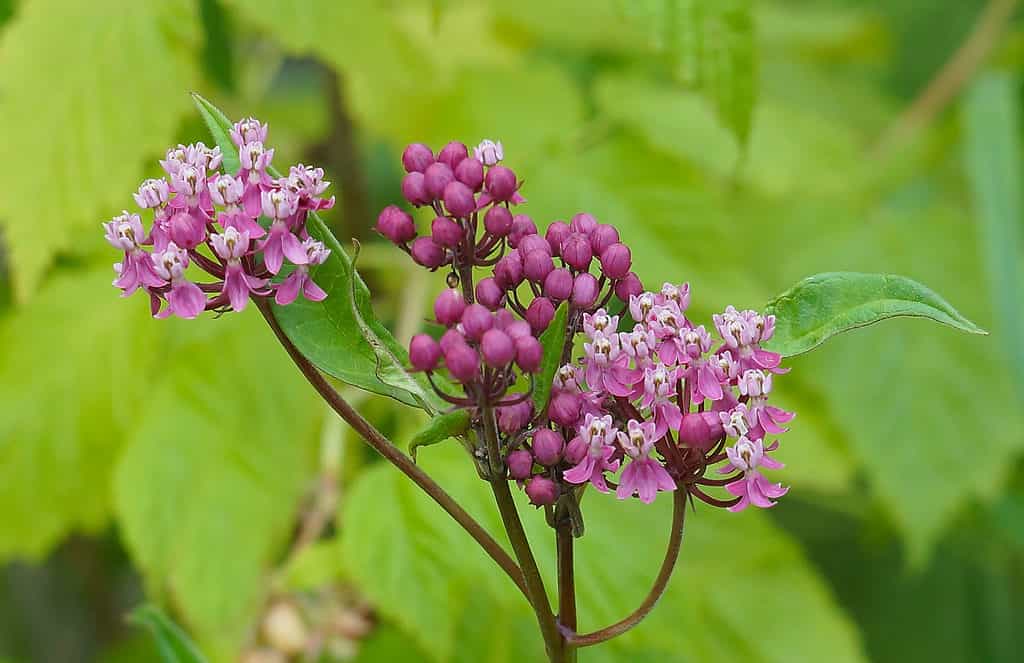
Swamp milkweed grows best in moist areas like marshes, swamps, and floodplains.
©ttoleg/Shutterstock.com
The swamp milkweed is a perennial wildflower that grows to about three feet tall. It has large clusters of pink flowers in late summer and fall.
Swamp milkweed grows best in moist areas like marshes, swamps, and floodplains. This plant can also grow in drier soils but will not flower. Swamp milkweed is native to the southeastern United States—New Jersey, Florida, and Delaware.
Swamp milkweed produces a lot of seeds each year, which helps it spread quickly by seed dispersal. The seeds are wind-dispersed and float on water until they reach stable ground. They can also be dispersed on animals like deer or cattle who eat the plant’s leaves and stems and deposit the seeds elsewhere in their feces when they defecate.
The swamp milkweed does best when grown in moist soil that does not dry out too much during the growing season. If your soil is always dry, consider planting swamp milkweed in a container so you can provide more watering when necessary.
9. Purple Coneflower (Echinacea purpurea)
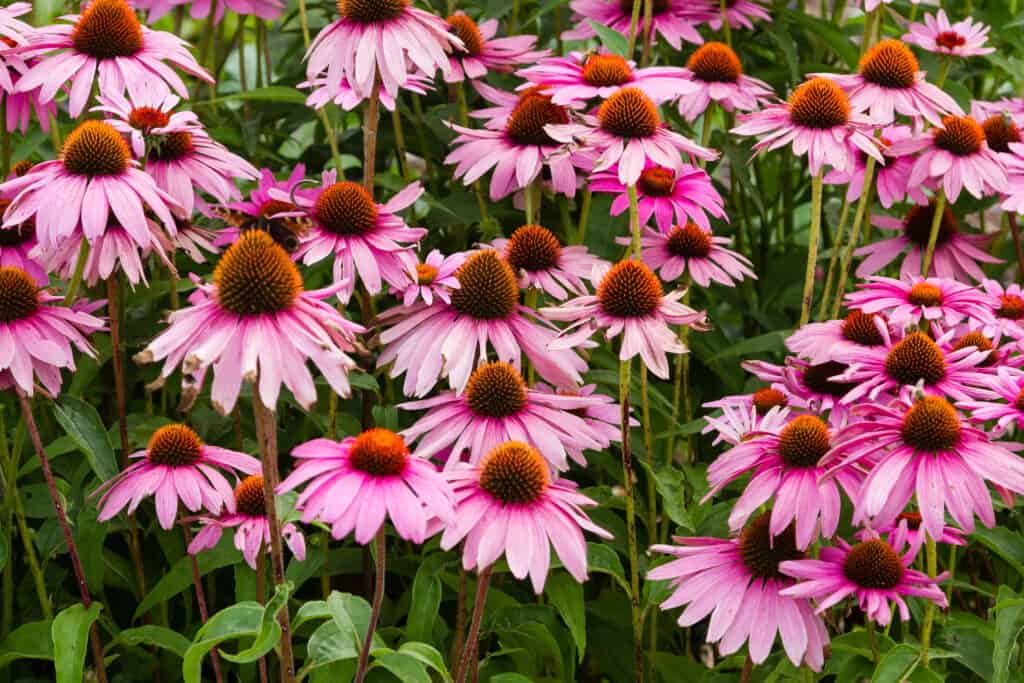
Purple coneflowers grow to a height of about 47 inches and a width of 10 inches when mature.
©Milosz Maslanka/Shutterstock.com
Purple coneflowers are best known for their bright purple blooms, which have spurred a variety of uses from medicinal to culinary to ornamental.
The plants grow up to three feet tall and produce flowers in the summer months, although they may bloom year-round in warmer climates. Purple coneflowers are native to Delaware and the eastern half of the United States but can also grow in many different areas.
Purple coneflowers like dry, well-draining soil and can grow in direct sunlight or light shade. They do not require much water or fertilizer and will do well with minimal care. They also attract butterflies and pollinators while providing a beautiful addition to any garden.
10. Eastern Redbud (Cercis canadensis)

Eastern redbuds
flourish in full sun but can also grow in partial shade.
©LMPark Photos/Shutterstock.com
This is a small deciduous tree with a short trunk and round, spreading crown. Its bark is smooth and light grey, turning ash-grey with age.
The flowers are small, white, fragrant, and borne in clusters of two to four in the upper branches from April to May. They are followed by long, pendulous seed pods that turn pink or red before opening in fall.
Eastern redbuds flourish in full sun but can also grow in partial shade. They do well in moist soils but will also tolerate dry ones with good drainage. They grow well in pH levels from 6.0 to 7.0 but are sensitive to iron chlorosis when grown on alkaline soils.
11. Black-eyed Susan (Rudbeckia hirta)
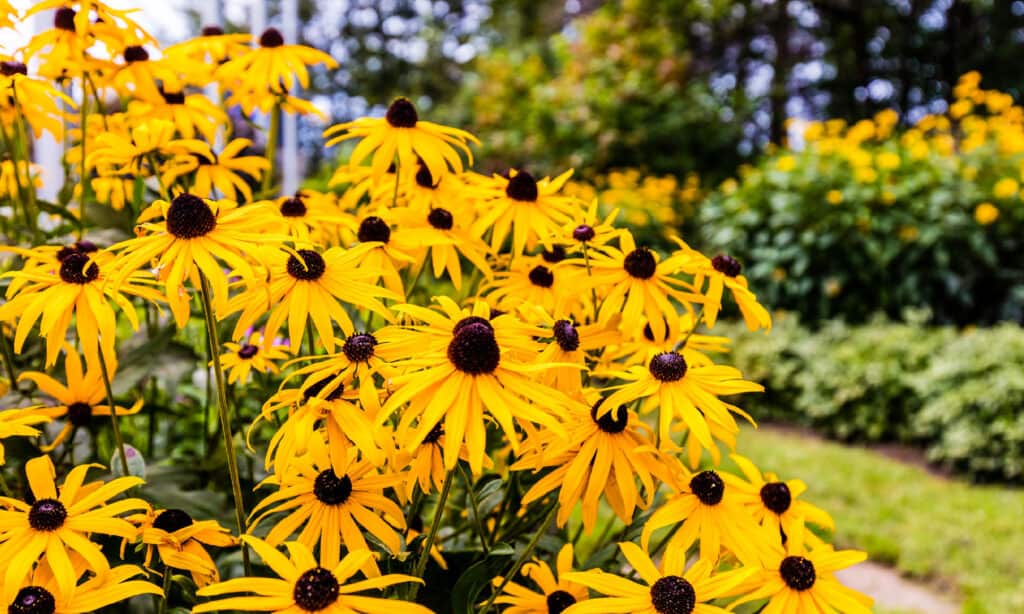
The
black-eyed Susan
produces seeds that germinate after a fire or other disturbance, making it an important part of the ecosystem as it helps restore the soil after disturbances.
©iStock.com/Dopeyden
The plant grows in both full sun and some shade. It is a common plant throughout Delaware and can be found along roadsides, fields, meadows, and stream banks.
The plant can grow up to five feet tall with a spread of four feet. Its flowers are bright yellow with brown centers and bloom from late spring through fall. The black-eyed Susan produces seeds that germinate after a fire or other disturbance, making it an important part of the ecosystem as it helps restore the soil after disturbances.
This plant also has medicinal properties. It is used as an anti-inflammatory and for treating wounds.
Summary of the 11 Native Plants in Delaware
Here are 11 Native Plants in Delaware:
| Rank | Native Plants |
|---|---|
| 1 | The Dwarf Fringe Tree (Chionanthus virginicus) |
| 2 | Smooth Sumac (Rhus glabra) |
| 3 | Eastern Redcedar (Juniperus virginiana) |
| 4 | Dock Mallow (Malva sylvestris) |
| 5 | Swamp Azalea (Rhododendron viscosum) |
| 6 | Broadleaf Arrowhead (Sagittaria latifolia) |
| 7 | New Jersey Tea (Ceanothus americanus) |
| 8 | Swamp Milkweed (Asclepias incarnate) |
| 9 | Purple Coneflower (Echinacea purpurea) |
| 10 | Eastern Redbud (Cercis canadensis) |
| 11 | Black-eyed Susan (Rudbeckia hirta) |
Final Thoughts
Native plants, especially native trees, and shrubs, have been shown to provide a host of benefits for our environment. For example, they can help reduce runoff, prevent soil erosion, and conserve water. The plants do so much for us as a state and country that we should consider planting them more often in our landscapes than in non-native ones.
The photo featured at the top of this post is © Kristine Rad/Shutterstock.com
Sources
- The Spruce / Accessed December 10, 2022
- Arbor Day / Accessed December 10, 2022
Thank you for reading! Have some feedback for us? Contact the AZ Animals editorial team.







